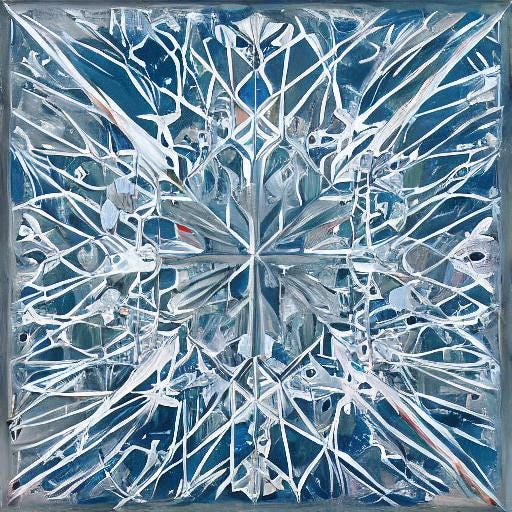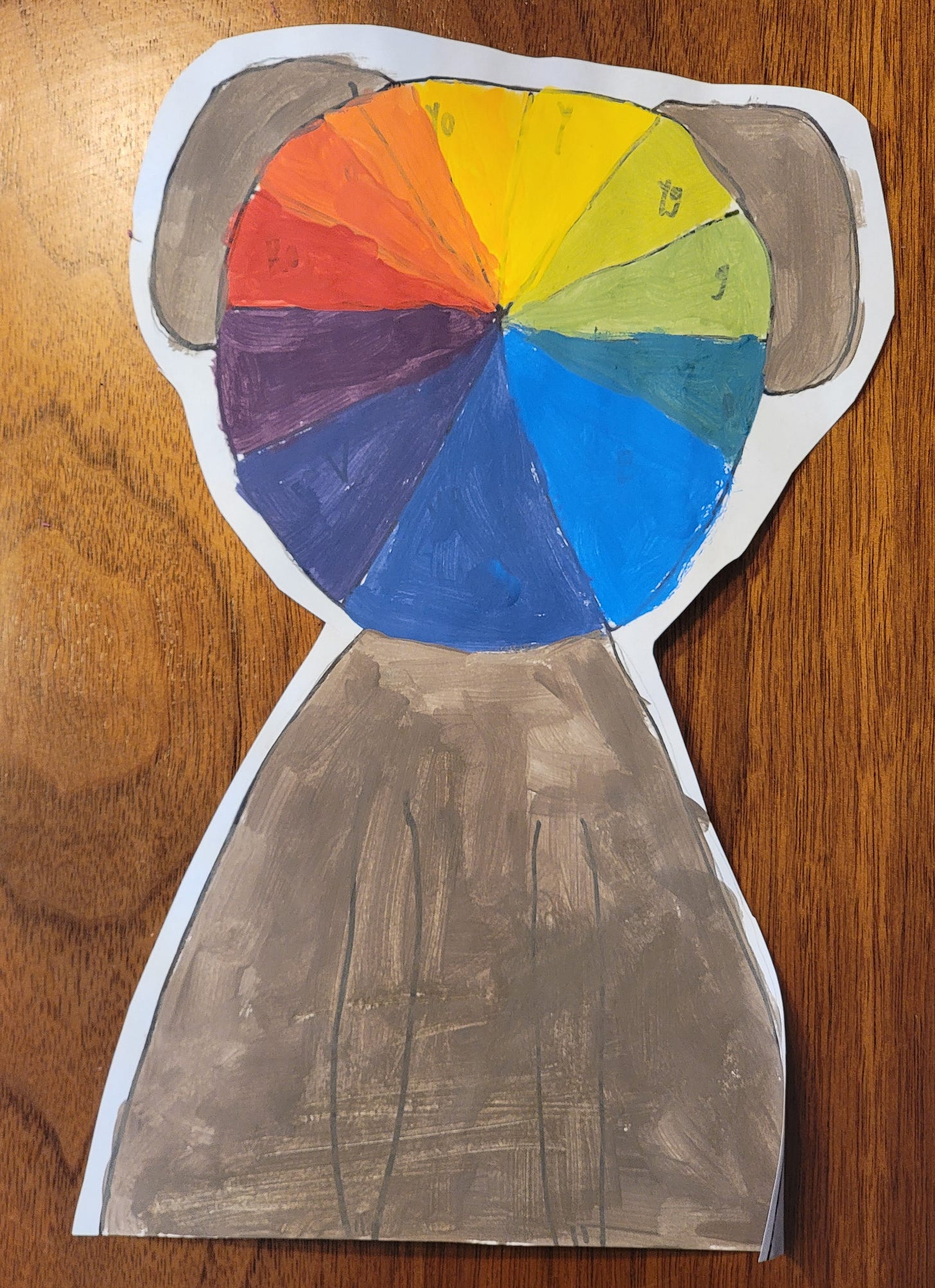What Moved Me to Inner Tears & Outer Smiles—American Symphony, a Netflix Documentary
I’m not much of an eye crier anymore, even though I wish I was; it’s free catharsis.
But as I watched American Symphony—a gorgeous story about love, courage, creativity and human forbearance—my heart shed genuine tears, which almost feels as good as a real down-on-the-knees eye cry, but not quite.
warning: there may be some subtle spoilers.
The documentary follows musician Jon Batiste and his wife, Suleika Jaouad, in their individual and together journeys through an eventful, joyous, yet most difficult, and ultimately triumphant 2022.
Jaouad, the New York Times bestselling author of Between Two Kingdoms, falls out of remission from leukemia after 10 years and enters her second bout of harsh treatments.
This, all while Batiste, a former student at Julliard, reaches a pinnacle in his musical career, composing his one day, one time only production at Carnegie Hall of American Symphony.
The couple shine brightly, even through dark moments—mostly because they are so real and present in front of the camera.
Jaouad reveals her survival mechanism as creativity; where creativity in itself is an act of survival.
The two embody this act each day, supporting one another. At one point we follow the couple down the hospital hallway in a tender game of Simon Says.
Jaouad says to Batiste, “we are living a life of contrasts”—and they are: on her first day of chemo, Batiste’s 11 Grammy nominations are announced.
When side effects of Jaouad’s treatment makes it hard for her to see words, she leans on the practice of painting.
Creativity binds them as a connecting force as she shares her paintings with Batiste while he is away on tour over FaceTime.
Later, as she is struggling through, she asks Batiste for her paints, sits up and gets to work in her hospital bed.
Throughout, Batiste’s positive energy is contagious, yet like all great artists in the spotlight, he is criticized for his success, often by other musicians.
He responds by saying, “Why be jealous. Be You.”
Along with the healing capacity of creativity, “Be You” takes on a thematic role in the film, a Batiste mantra.
We see him battling anxiety, speaking with his therapist, and coming to terms with the double-life of a famous music artist who cares deeply for his family and private life.
Musical arrangements included of practice sessions for American Symphony, it’s final production, as well as other performances, are inspirational.
With so many talented world musicians included—this documentary is one of my favorites of the year.
***
3 Things Not to Miss of Jon & Suleika
Get inspired by Suleika Jaouad’s Ted Talk (pre-American Symphony):
Get intimate and architectural with Jon and Suleika in this Architectural Digest Home Tour (post “American Symphony”):
Cry, Cry, Cry with Jon and his His all-female collaborative band in NPR’s Tiny Desk Concert from Nov. 2019:
don’t forget—
no matter what
your critics say,
“Be You.”
The Late Master Poet I Read Over & Over —Mark Strand
I was first introduced to Mark Strand while reading the Best American Poetry Anthology 1997 where his poem “Morning, Noon and Night” was included.
The poem was first published in the Times Literary Supplement, and was later included in his Pulitzer Prize winning book of poems, Blizzard of One.
I gave my copy of Blizzard of One away years ago to man who I barely knew, because he seemed like he needed it, in a sort of pay-poetry-forward gesture.
I still consider it my favorite all time collection of poetry by a single poet (not including collected works or anthologies).
So my heart wouldn’t cry, cry, cry forevermore, I purchased Strand’s New Selected Poems, which includes the majority of those in Blizzard.
If Blizzard of One was a record, then the poem “A Piece of the Storm” would be its title track. It was first published in The New Yorker.
This poem is a perfect winter warmer:
Here Strand evokes all kinds of space and quietude that relate to the cold, solitary season. This is a world where things slow down. After all, you were just sitting here reading a book.
Yet there is an exhilaration in the life of this snowflake, and to the cold entering your room and finally touching down on your chair’s arm—yes, you, your chair.
It’s as if the snowflake chose you right at this time, and for a reason.
The poem has a cinematic movement, the snowflake, and it’s ultimate relation to the “you” who ultimately becomes one with it, as it melts there in front of you, and also to another person, “someone years hence” who will have the same exact experience, originating from this same storm a blizzard of one. … when:
It’s time. The air is ready. The sky has an opening.
Because aren’t we all having these same earthly experiences no matter when or where we are from?
Poetry is ever-green; it’s universal, often translated across languages and cultures.
We read Tu Fu from centuries ago and still feel through his words what was in his heart. The seasons he speaks of are the same seasons as ours.
Poetry is about being human—about the journeys of the human heart (we all have one)—while alive on this earth.
And it just happens to be about everything else, too.
When I read poetry, I want to feel myself suddenly larger … in touch with—or at least close to—what I deem magical, astonishing. I want to experience a kind of wonderment. —Mark Strand, The Art of Poetry No. 77, 1998
Listen to Mark Strand read his poem, “Lines for Winter.”
Here, Mark writes an ars poetica (writing about writing poetry) titled “Eating Poetry,” using his own unique sense of humor.
Discover Strand’s reason for moving in “Keeping Things Whole.”
An Ongoing Theme in this Newsletter—The Importance of Creativity
For Jon Baptiste and Suleika Jaouad, creativity is an act of survival. The more I write, the more I understand this concept.
Part of the purpose of this newsletter is to prove to myself, I can be more than one thing each week, each day. I am more than a real estate professional.
While I love homes, architecture, and helping people invest in a new glorious space, I can also be a writer. A critic of literature, music, and poetry. A poet.
A person can—and should—follow the advice of Batiste. “Be You.”
This is not just a cliche statement made from two words. Not if you take it to heart and make it a personal mission to achieve; now.
Be you, little snowflake
—Adam Jon Miller
This newsletter is me coming to terms with how important the writer and poet inside of me actually are.
Turns out they are as important as my day job, maybe more important in ways. And they need expression and embodiment.
Since starting this newsletter, I feel happier, lighter. I write it because I know you are reading it—yes, you, your eyes and mind are taking it in.
Like the little snowflake entering your room and landing on the arm of your chair.
It’s sharing. Connecting. Catharsis.
This is me being me, as writer, for you.
If you are reading these words now, you are on this creative journey with me. I’m so excited to have you!
And the exhilaration is: I don’t know where it will end.
Will “someone years hence” also read these words. Will this inspire them—just a little bit— will it inspire you, yes you, to be creative, however you deem to be.
To: Be You.
3 Inspiring Quotes on Creativity—
“You can’t use up creativity. The more you use, the more you have.”
— Maya Angelou“The creative adult is the child who survived.”
— Ursula Le Guin“The world always seems brighter when you’ve just made something that wasn’t there before.”
— Neil Gaiman
3 Poems Exploring Creativity—
“Beginning Sculpture The Subtractive Method” by Claudia Emerson
“The Painter” by John Ashbery
“The Thought Fox” by Ted Hughes
And if that isn’t enough to inspire you to get creative, have a look at Vera’s Roxanne Rhonda Miller as Color Wheel:
(so go get busy—trust me, your pet needs to be a color wheel, too)
Weekly Word—
This one is after Mr. Jon Batiste. Cause he loves himself a good melodica.
The definitions of melodica from most traditional dictionaries are boring. So this one’s taken from melodicaworld.com:
Melodica
The melodica is a fun, handheld piano-style keyboard which you blow through to make a sound. It sounds like a cross between a harmonica (mouth organ) and a piano accordion. They’ve been around for about 50 years, first making a splash within schools as a learning instrument. They’ve since been adopted by reggae artists, pop and jazz musicians, and even classical composers.
Here’s a young Batiste discussing the melodica and how it works:











That movie sounds so good! I just got rid of Netflix so I’ll have to see if I can watch it at a friend’s house. I LOVE the melodica! My friend Stephen is in a one man band called Hands and Feet and he plays one in many of his songs. It’s such a cool sound. I think you’d like his music, actually. Unfortunately it’s not streaming on anything. Maybe it’s on band camp, you’d have to download the app. I kept wanting to leave comments but was hesitant about giving up my email address. Today I said screw it!